Review: Fujinon MKX 18-55mm & 50-135mm T2.9 cinema lenses
posted Friday, August 31, 2018 at 10:15 AM EDT
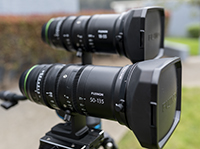
I love equipment that seems to relish in its own superiority: great optics, the best cameras, spectacular audio equipment. I'd be lying if I didn't just love the crème de la crème of camera gear even though I preach that you don't need it. And that's true; you generally don't. But when you can have some truly spectacular stuff, it's really nice to have the opportunity to use it, or better yet, own it. That's how I feel, for the most part, about these two Fujinon X-Mount cinema lenses: the Fujinon MK18-55mm T2.9 and the Fujinon MK50-135mm T2.9. Just holding these lenses feels like a luxury, and affixing them to a camera rig is just pure unadulterated gear porn.
I went into this review knowing, not guessing, that the optical quality of these lenses was going to be amazing. It just was so unlikely that they were going to be bad that even thinking this seemed like blasphemy.
And that's pretty much how I feel now after using both the 18-55mm T2.9 and the 50-135mm T2.9. Both these lenses are, overall, incredible examples of optical technology. So much so, it's a real shame they are only compatible with X-Mount and E-Mount cameras since I would love to have these on Micro Four Thirds, Canon EF or other popular video camera formats.
For this review, both lenses were tested on the latest firmware for the Fujifilm X-H1. Since these are cinema lenses, only video was captured for the purposes of this review. I had both these lenses together at the same time, and since they together cover such a great range of focal lengths, there will be much about the two reviews that cross over or repeats, so a lot of the below will refer to both lenses unless specifically noted. Since they have basically the same build and form-factor, and I was shooting with them as a pair, please go into the review with that understanding of my usage and perspective.
Build Quality
Fujifilm did something really special when they made the 18-55mm T2.9 and the 50-135mm T2.9. The design of these lenses will be familiar to those who have used cinema optics: mechanical, geared rings for zoom, focus and aperture, as well as marked points for multiple focal lengths, apertures, and focus distance, which allow for easier and more accurate adjustments while filming.
The front element of both lenses can be used bare, or with the included cinema lens hood that can be fully articulated in 360 degrees. It is held in place by a small screw on the side of the hood. Both lenses also feature a removable tripod foot.
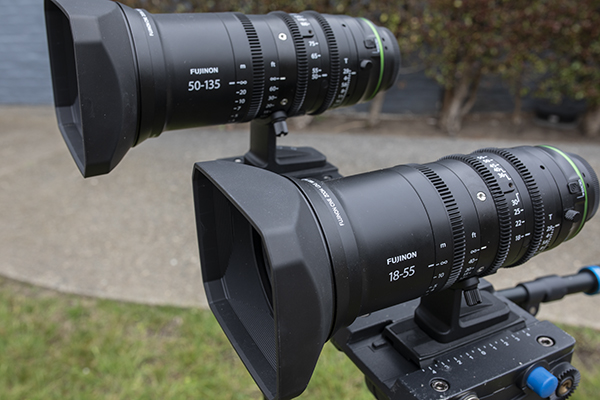
The lenses themselves, though large, are not particularly heavy. That isn't to say that the metal build isn't sturdy, which it is. But somehow Fuji managed to create two lenses that not only have great image quality and a full metal body, but did so without making them weight much. For optics of this size and quality, the 2.16-pound weight for both lenses is reasonable and light.
Both lenses, were you to ignore the markings on the sides of the optics, are physically identical. Both are the same weight, width and length and both focus and zoom entirely internally. That last note is of particular importance, as it is critical that the space a rig takes up and the balance of that rig not change when shooting motion pictures on sets. In other words, if you have your camera mounted inside a cage, then you can swap between these two lenses and have all the gearing match up. It also lets you maintain proper balance should you use these lenses on a large gimbal setup. You don't want to be worried about all this when working with the number of moving pieces a film set requires.
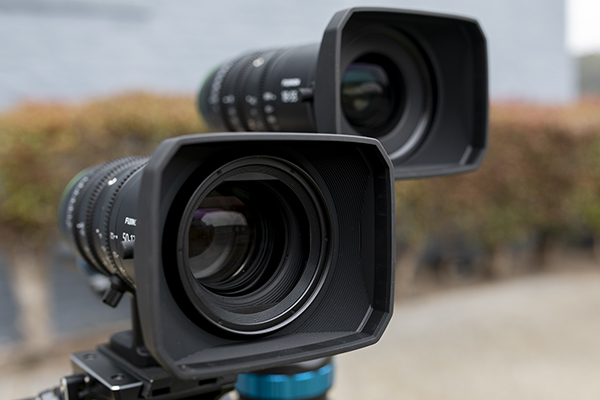
As expected, all three dials on the camera are de-clicked for smooth adjustment and operation, and the smoothness of their operation needs to be stated. Each dial moves freely and smoothly, but with just enough tension to allow for fluid yet accurate adjustments.
Image Quality
The Fujinon MK18-55mm T2.9 exhibits some truly excellent image quality (the same can be said for the 50-135mm). Throughout my shooting tests in various environments, I noticed no chromatic aberration, even wide open as well as very little to no vignetting (likely due to firmware specifically designed to reduce this in the X-H1). Sharpness was outstanding at all focal lengths and from wide open to nearly fully closed.
On that last note, if you look closely at the lens' performance through the aperture range, you will notice a couple of things. Firstly, through most of the aperture range of both lenses, the image quality produced is incredibly and beautifully sharp. Looking at the footage, I have to say that I was impressed with how good the quality was from the wide open aperture of T2.9 all the way down to T16 on both the MK18-55mm and the MK50-135mm. Only at T16-T22 did I start to see noticeable diffraction-related softness take place and sharpness quality slightly falter. The biggest drop-off is at T22, so I think you could shoot at T16 if you wanted to.
It is my opinion that videos captured with these lenses look the best at T2.9 through T5.6, due mostly to the beautiful depth of field and pleasant bokeh. It certainly helps that the images captured are also crisp and sharp, but I still smile when I see the smoothness of the out of focus areas, and the transition to them.
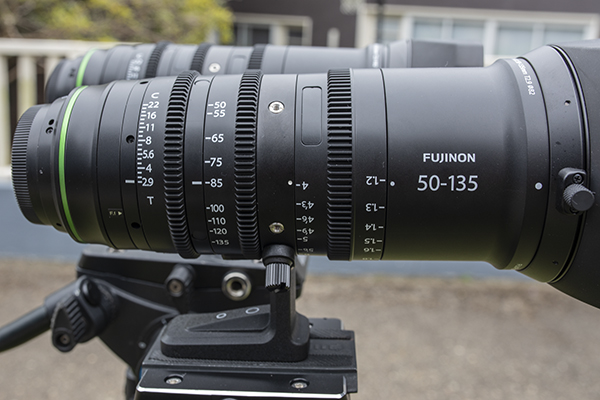
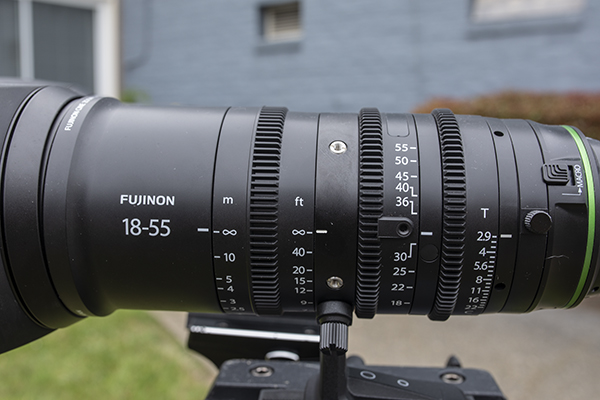
Speaking of the bokeh, it can be best described as perfectly circular, which isn't necessarily what you find in other cinema lenses. A more hard-edged bokeh is somewhat common and lends a certain look, so if you're going for that these lenses might not be the best choice. But if you're going for a more totally soft, full blur kind of look, these Fujinon lenses deliver.
The lenses also come with a macro switch at the neck of the lens, which allows you to get a bit closer to subjects and properly focus. The closest you can focus is about a foot and a half away with the MK18-55 and about two feet with the MK50-135 even with macro mode activated. That is not super close, but it's still nice to have as an option, especially if you find yourself in a tight shooting situation and need to buy yourself an additional foot. To note, the standard minimum focus distance of the MK50-135mm is 3.9 feet and the MK18-55mm is 2.8 feet if you are not using macro mode. Finally, I noticed no image quality degradation when using macro mode, so you should feel free to use it without concern.
In Use
I mentioned in my review of the Fujifilm X-H1's video features that the camera itself isn't really tuned to be what seasoned video shooters are looking for, and I stand by that opinion still. The camera itself doesn't have the feature sets or usability of a full-time video camera, but if you pair it with these lenses, you'll find the optics are never going to let you down. Even when I was frustrated by the X-H1, I was soothed by the lenses.
It should be noted that the Fujinon MK18-55m T2.9 and 50-135mm T2.9 are both fully manual lenses. There is, however, electrical circuitry in these X-Mount lenses that communicate metadata and settings to the camera body, but that's it. It, then, almost goes without saying that, as with most dedicated cinema lenses, there is no autofocus. To use these lenses effectively, you're going to have to become comfortable with a fully manual shooting workflow.
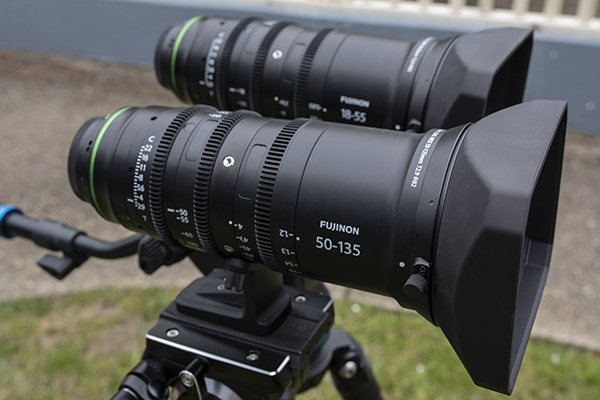
In my opinion, there is really only one drawback to these lenses: They are only available in Sony E-Mount and Fuji X-Mount.
It should also be noted that on either mount it will only cover the Super 35 (APS-C) format. That means you won't get the advantage of the full frame look of a camera like the Sony A7R III, for example. For Fujifilm, video is already only captured in Super 35 or smaller. Having these lenses with just E-Mount or X-Mount flavors is a bummer, because the quality is exceptional, but not being able to use a full-frame sensored-camera is a disappointment. Additionally, Fuji X-Mount is not a particularly widespread mounting format in cinema, so it's kind of a let-down that other mounts are not available, such as for Canon, Four Thirds or even PL (note: Fujifilm does make PL-mount cinema lenses. I will say, it's nice that the original set of two was made for Sony E-Mount since that, at least, has a large following of video shooters.
Another weird note is that the E-Mount and X-Mount versions of these lenses look different. The E-Mount version has been on the market for some time and features a different barrel design and logo, while the new X-Mount one is much cleaner in design and look. It's also slight fatter towards the rear than the E-mount version. According to Fujifilm, the size and design differences that make the X-Mount version larger is that this version includes different wiring and circuit boards to send metadata to the camera body.
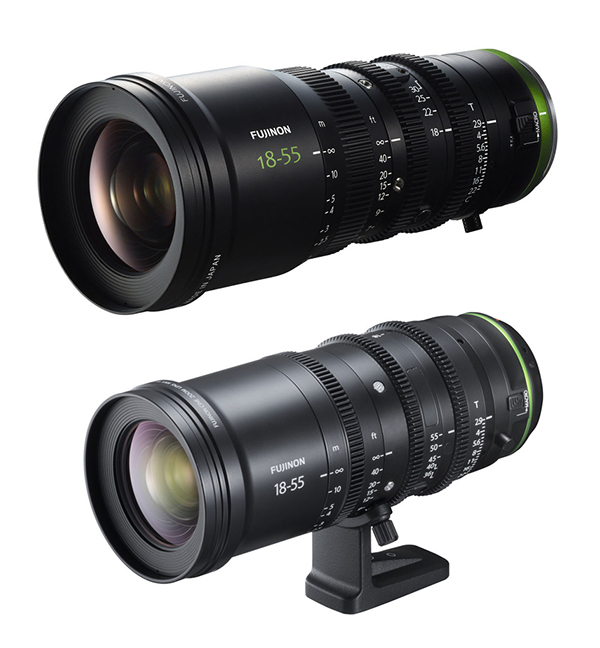
I note in my "Cons" list below that these lenses require a set or set piece, as they are not "run and gun" lenses. I do want to spend a bit of time on this, because anyone transitioning from the stills world to video might find this a bit jarring. Motion picture cinematography generally requires a lot of pre-production and set up time to create great visual pieces. Cameras and lenses have gotten smaller and quality has greatly improved in those small formats, letting photo and video shooters work almost as quickly as one another, when for most of history videographers have been significantly slower moving beasts than photographers. Optics like the MK18-55mm and MK50-135 are from the age of a slower moving animal, and these lenses almost demand a rig and significant setup time in order to use properly. They are hard to hand-hold, they have no image stabilization at all in the body of the lenses, and the lack of autofocus all combine into a "you have to tripod this" situation.
So with these lenses, know that a videographer's workflow slows down considerably when compared to using a still lens to shoot video. This is a cinema lens, and the expectations that come with that should be evaluated before you make a purchase.
Pros:
- Excellent build quality: metal exterior, geared dials, light weight
- Smooth yet firm focus, aperture and zoom rings means a great feel and accurate adjustments
- All-internal zoom and focus
- Confirmed Parfocal, but keep in mind you have to manually set this on the lenses for each camera you use
- Both lenses weigh the same and have the same external housing
- Outstanding image performance across the aperture range; sharpness is exquisite
- Little to no noticeable vignetting
- Little to no chromatic aberration, even wide open
Cons:
- Limited mounting options (only X-Mount and E-Mount)
- Only compatible with the Super35 format and smaller
- Require using a set or set piece, as they are not "run and gun" lenses
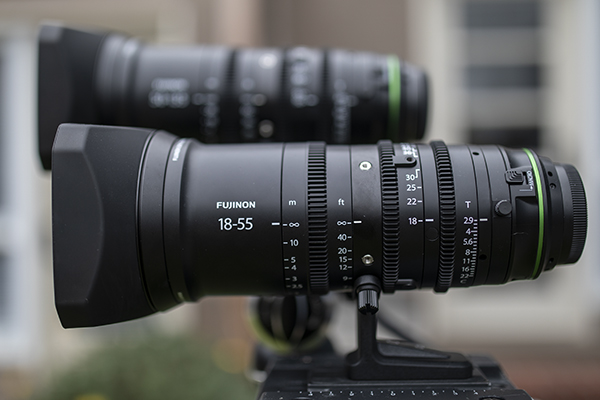
I highly recommend both of these lenses together as a set, since they so well compliment each other. Since their weight and physical profile are identical, building set pieces around these lenses is a piece of cake, and allows your camera operator to interchangeably use whatever he or she needs for a shot without worrying about upsetting any balance or spacial restrictions.
As for pricing, the MKX18-55mm T2.9 will run you $4000 while the MKX50-135mm T2.9 comes in at $4300. Together, to cover the entire 18-135mm range, will cost you $8300. That's a great focal range capable of a constant T2.9 throughout, but that's also a lot of money for those who aren't serious about cinema. For those that are serious about cinema, this is actually really affordable. They're almost cheap for cinema lenses. So they'll appeal to the high-end professionals, but might seem too expensive for anyone less than that.
If you find that these are worth your dollars, then you'll be thrilled with their capabilities. T2.9 is wonderfully wide open and creates a beautiful out of focus bokeh without sacrificing sharpness or image quality. Colors pop, details are crisp and the lenses themselves operate wonderfully. Fujifilm has made two really great lenses here for a price point that's extremely competitive in the cinema lens market. They're really excellent, but it's a shame they aren't full frame compatible first, and even more so that these are only made for two lens mounts.